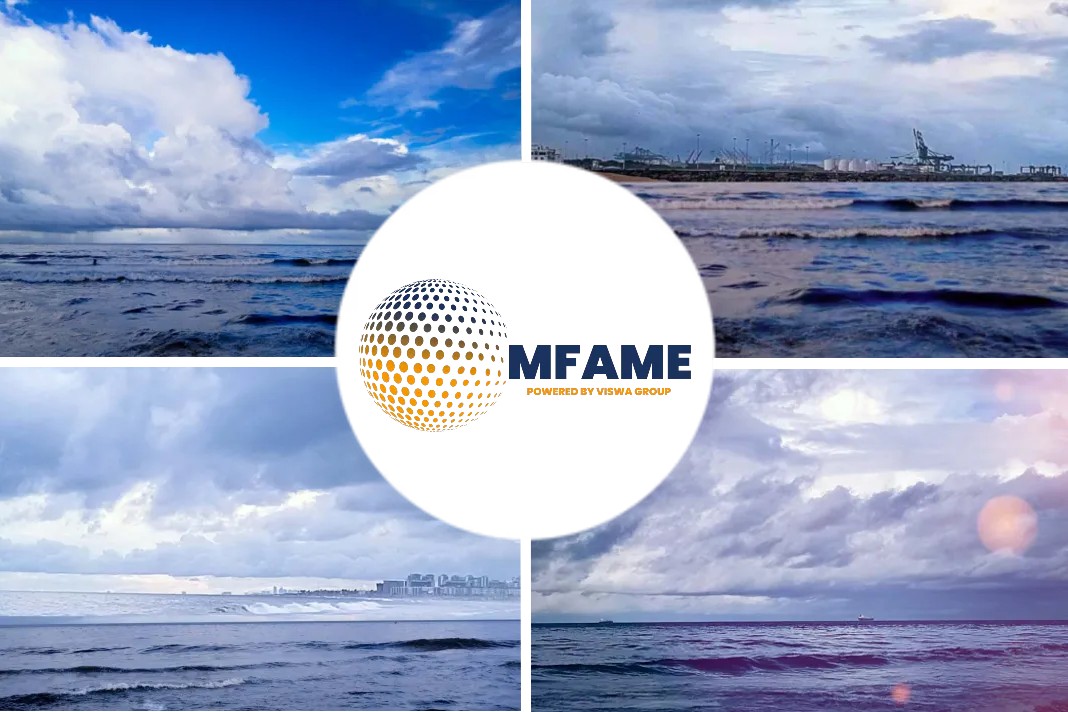- Hapag-Lloyd’s chief executive, Ralph Habben Jansen expects to see growth of 3-4% this year.
- Hapag-Lloyd reported a preliminary operating result for the fourth quarter of €164m ($189m) and a full-year debit of €443m last week.
- The company will also retrofit one of its 17 LNG-ready 15,000 teu vessels, inherited from its merger with UASC, with gas tanks.
- Hapag-Lloyd expects a $75m-$100m hit to the bottom line this year with the annual cost around $1.1bn a iyear.
Hapag-Lloyd’s chief executive, Ralph Habben Jansen, is more optimistic about the outlook for container shipping than his counterpart at Maersk, reports The Load Star.
A Clash of Opinions
During a breakfast press briefing at the JOC TPM Conference in Long Beach yesterday, Mr Habben Jansen said he still expects to see growth of 3-4% this year. However, later Maersk Group chief executive Soren Skou gave conference delegates a downbeat forecast of just 1-3% growth.
A Decent Recovery
Mr. Habben Jansen said that after the Chinese New Year holiday, there had been a “decent recovery”. According to him, the forward bookings were “strong”, suggesting a “fairly healthy” peak season this year.
Last week, Hapag-Lloyd reported a preliminary operating result for the fourth quarter of €164m ($189m). It also reported a full-year debit of €443m, which it said was at the “upper end” of its revised guidance given in June last year.
Results of High Operational Costs
The company was obliged to issue the profit warning after it was hit by “an unexpectedly significant and continuing increase in operational costs”. A substantial hike in bunker and charter hire costs led to the above results. The profit warning spooked investors, and immediately after the announcement Hapag-Lloyd’s share price dropped in value by 21% before bouncing back later.
Mr. Habben Jansen said, “With the earnings result, the position of the carrier was cemented near the top of the operating margin ranking”. On 22nd March 2019, the full financials will be published.
Extension of the 2M Agreement
He told The Loadstar that THE Alliance vessel sharing partnership was “working well”. He also does not foresee HMM joining the grouping next April when its slot-charter deal with the 2M expires. “In my view, the most likely outcome is that HMM will extend its agreement with the 2M,” he said.
No More All-Ins
Uffe Ostergaard, president of Hapag-Lloyd America, spoke to The Loadstar in regard to IMO 2020. He said, there was no change in the strategy of keeping freight contracts separate from its new BAF recovery mechanism. Happag-Lloyd rolled out the mechanism in January. “There will be no more all-in contracts,” he pledged.
Mr. Habben Jansen said, “Hapag-Lloyd’s own MFR (marine fuel recovery) formula, or customer versions, would be in place for all new annual transpacific contracts being signed from 1 May.”
He said that it was “a good job” that the difference in price between HFO [heavy fuel oil], and the IMO 2020-compliant LSFO [low-sulphur fuel oil] was so great. He expects it to be a spread of around $200 per tonne. Otherwise as per Mr. Jansen, carriers “might try to outsmart one another” to gain market share.
Hapag-Lloyd Goes Pro Scrubbers
Although, initially coming out against the use of scrubbers,Hapag-Lloyd has bowed to the pressure. Now, it will have the exhaust gas cleaning systems installed on 10 of the biggest ships in its fleet. Also, it will retrofit one of its 17 LNG-ready 15,000 teu vessels, with gas tanks. It inherited this vessel from its merger with UASC.
However, at an estimated $25m it is unlikely that even if the trial is successful, Hapag-Lloyd will look to have further ships converted. This is assuming that the cost is at least $15m more expensive than the price of a scrubber installation.
Predictions of the Price Spread
Mr. Habben Jansen said that, in practice, ships would need to start bunkering with LSFO “sometime” in the fourth quarter. He estimated that the hit to Hapag-Lloyd’s bottom line this year to be between $75m-$100m, based on the annual cost would be around $1.1bn a year.
Did you subscribe to our daily newsletter?
It’s Free! Click here to Subscribe!
Source: The Loadstar


























